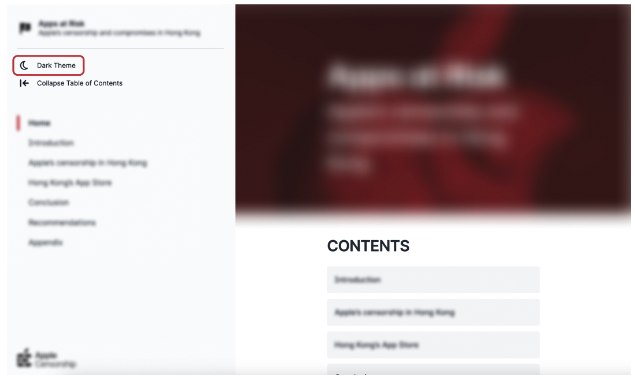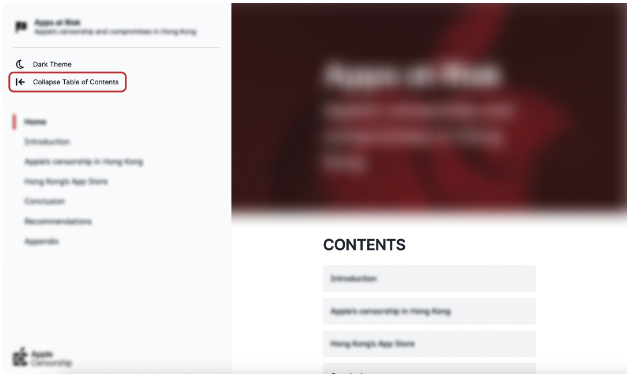Web accessibility is an inclusive practice of thought and design that strives to eliminate or mitigate barriers that would otherwise prevent equal access to the Internet due to disabilities or socio-economic and situational restrictions. When websites and tools are appropriately designed for web accessibility, all users have the same capability to access online information and functionality. This essential practice is growing across the globe – and its importance is doubly so in the case of OTF’s Internet freedom work, which seeks to increase and enhance online access, awareness, privacy, and security for all. As an organization, OTF is committed to supporting and increasing web accessibility in its work, and has offered secure usability and user-interface assistance to Internet freedom and digital security tools since 2015 (first as the Usability Lab and then as the Secure Usability and Accessibility Lab starting in 2021). This critical level of support helps OTF-funded projects and other Internet freedom technologies recognize and solve usability and accessibility challenges.
As part of OTF’s commitment to creating an inclusive and diverse community, the organization also works to share openly all possible aspects of its work. OTF-funded projects and fellows often produce written reports to share lessons learned – but when these reports are not designed for accessibility, their critical findings and empowering information can at times be either unavailable or more difficult to obtain for those in the community with differing needs. This technical barrier compounds the pre-existing challenges faced by these individuals, which is why OTF recently took another important step in its effort to support Internet freedom by engaging Ura Design to implement web accessibility for two new reports from GreatFire’s Internet Freedom Fund-funded AppleCensorship project.
Ura Design and Web Accessibility
Ura Design is a design studio dedicated to making open source software more usable, accessible, and competitive. The Ura team has provided UX and visual design support to a wide range of OTF-funded projects since 2017. Two years into this collaboration, Ura also began to lend its services to OTF’s Learning Lab in order to help the organization and its fellows better share their findings via data visualization and visual identity support for both digital and more traditional PDF-style reports. In general, Ura believes accessibility should be a requirement – not a bonus – when it comes to web design. As a result, they routinely provide clients with manual and automated accessibility testing, including best practices in design and development to ensure projects comply with Web Content Accessibility Guidelines 2.1 AA or higher. This level of compliance indicates that the website or digital content at issue was designed and developed in a way that makes it more accessible to people with disabilities, such as those with visual or hearing impairments. Oftentimes this includes features like text alternatives for images, captions for videos, and keyboard navigation options.
With this external expertise and pre-existing relationship with the Learning Lab, the timing proved right in late 2022 for the Ura team to begin OTF’s transition towards more web-based accessible reports through a collaboration with GreatFire’s AppleCensorship project.
Report Collaboration with AppleCensorship
Spearheaded by GreatFire, the AppleCensorship project tracks Apple iOS applications for instances of censorship in over 150 countries and documents when and how apps are removed or otherwise censored. The goal is to provide more transparency in an otherwise opaque space by identifying censorship by Apple, tracking whether apps are being blocked locally or globally, and openly sharing the generated data and information with policymakers, journalists, advocates, and everyday online users. Most recently, the project published two key reports on their findings in Russia and Hong Kong.
The report United Apple: Apple’s censorship and compromises in Russia highlights “examples where Apple used its App Store, software, and physical products to implement the Russian government national censorship policies,” while also examining “Russia’s App Store and the unavailable apps that were identified by AppleCensorship’s App Store Monitor (ASM).” From 2018 to 2022, the report’s findings reveal that Apple increasingly “acquiesced to the Russian government in a number of censorship, surveillance, and information manipulation requests.” In turn, “Russia’s innovative and extensive oppression has also led to censorship within software (LGBTQ+ watch faces), accessories (LGBTQ+ watch bands), software-based cartography (Crimea), protocols (Private Relay), and even the design of iOS (Russian iOS).” As the report notes, Apple Maps for Russia even goes so far as to show Crimea as a part of Russia itself.
Apps at Risk: Apple’s censorship and compromises in Hong Kong paints a similar picture of the state of play for Apple in Hong Kong. The report finds “Apple has taken proactive measures to curtail the fundamental freedoms of its employees and its users in order to avoid being perceived by Beijing as supportive of the pro-democracy movement.” For example, Chinese iOS users have been unable to see or use the Taiwan flag emoji since 2017, and this censorship expanded to users with their iOS region set to Hong Kong or Macau in 2019. According to AppleCensorship’s analysis, moves like this have occurred because “Apple’s response is aligned to its global business strategies, with a top priority of appeasing the Chinese government to protect Apple’s supply chain, distribution channels, and revenue stream.”
These findings and accompanying recommendations are critical information that should be available online to all people, regardless of their abilities or socio-economic/situational status. The Ura Design team’s efforts to make the AppleCensorship reports web accessible and transition away from PDF-only content creates a far more inclusive environment for all types of audiences. Key points of accessibility embedded in the new reports include:
- Dark Theme: makes viewing the content easier for people with light sensitivities.
- Linked report headers: increases accessibility for section-by-section viewing, reading, and sharing.
- Scrollable/linkable tables + sidebar: enhances the overall navigation and reading experience with a sidebar that can be toggled on/off for increased accessibility.
- Mobile accessibility: helps reports conform by size to any screen with no need to zoom to view or read.
- Offline saving options: enable continued access regardless of situation while also offering the ability to save data.
- Open source framework: allows users to review content from a markdown perspective, creating a collaborative and community-based element of review.
- Optimization: 90% of web-based accessible reports are smaller than traditional PDFs.

| “Dark Theme” mode: This option provides a visually appealing and accessible reading experience that complements the default Light mode. The theme ensures optimal readability in low-light environments and offers a sleek alternative aesthetic. Dark Theme mode maintains the same level of legibility and clarity as Light mode, ensuring an inclusive experience for all users. A single button enables toggling between Light and Dark modes, empowering users to personalize their browsing experience without sacrificing accessibility or content quality. |

| “Collapse Table of Contents” toggle: This button allows users to optimize their reading experience by collapsing the Table of Contents sidebar. With a single click, users can declutter their screen, maximize available space for content, and enhance reading focus. When needed, the sidebar expands again with a click to provide quick access to the Table of Contents. |
Web Accessibility Work Going Forward
In working to make the reports web accessible, the Ura team found one of the primary challenges was data visualization and determining the appropriate descriptions/locations for certain images. Designing the correct page layout is essential to ensure that screen readers are able to present the information in a logical and natural manner for users who are visually impaired or otherwise cannot read. Yet interestingly, the team has repeatedly found the biggest obstacle to web accessibility work is not technical but rather funding oriented. At present, many funders and organizations still view reports as primarily PDF-only content. More work must be done to change the dominant mindset from perceiving reports as being print-based to web-based. Ura believes this mental obstacle can often be best overcome by demonstrating the increased shareability of web accessible reports when compared to their print-based counterparts. And importantly, once created, accessible frameworks can be used for future reports as well – cutting down on time requirements and mitigating capacity constraints that might otherwise prevent the work from being greenlit or performed on a consistent basis.
OTF will continue to keep web accessibility support top of mind for future projects, and will include accessibility as part of its forthcoming website revamp. In turn, when looking to the future the Ura team is hopeful they will be able to build on the framework and success of these two reports to make it easier to convince other funders and potential clients that web accessibility work is essential – not optional. Fortunately, web accessibility for future reports – not just on the AppleCensorship project, but on other Internet freedom projects in general – will be easier to implement given the initial investment that went into Ura’s work this time around. The project is also open source, so any issues can be reported on Greatfire’s GitHub repository. The more work that is accomplished in this vein, the swifter the paradigm shift can occur in which web accessibility is no longer viewed as an add-on, but rather the baseline upon which all tools, technologies, and information are shared across the web.
Parties interested in learning more or working to meet their web accessible needs can reach out to the Ura Design team here. OTF also offers secure usability and user-interface assistance to Internet freedom and digital security tools via its Secure Usability and Accessibility Lab. Through the Lab, OTF partners with service providers like Ura Design to supply three key services as an in-kind resource to OTF-funded projects and other Internet freedom technologies: (1) secure usability and accessibility coaching, (2) secure usability and accessibility consultation, and (3) secure usability and accessibility audits.
—
About the program: OTF’s Learning Lab is an in-kind service that helps OTF-supported projects and fellows with their communications needs and contributes to knowledge sharing among the internet freedom community. Our trusted Learning Lab vendors have expertise in writing, editing, graphic design, communications strategy, and research. They ensure Lab outputs, from blog posts to promotional plans, are presented in a visually appealing, accessible, and professional format.
***

